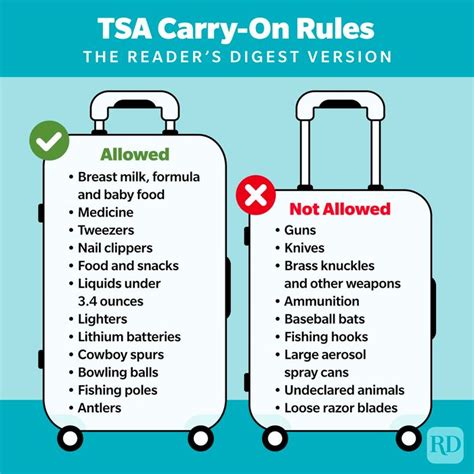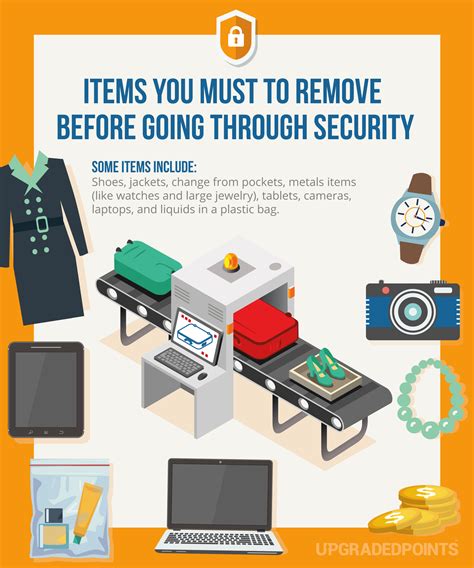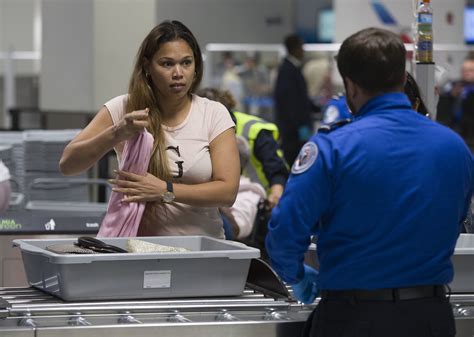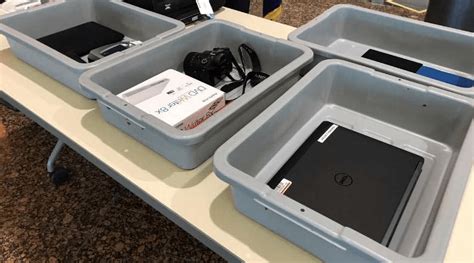
Travelers beware: Placing your phone in TSA security bins could lead to theft, according to security expert Bruce Snell, who identifies mobile devices as the most frequently stolen item at airport checkpoints.
TSA Bins: A Hotspot for Phone Theft
Security expert Bruce Snell is raising alarms about a common, yet risky, practice among travelers: placing smartphones in Transportation Security Administration (TSA) bins. According to Snell, these bins have become prime targets for theft, with phones topping the list of items pilfered at airport security checkpoints. He advises travelers to take extra precautions to safeguard their mobile devices as they navigate airport security.
“The number one thing that people are reporting getting stolen out of those bins are phones,” Snell stated. This revelation highlights a significant vulnerability within the airport security process and underscores the need for increased vigilance on the part of travelers.
Why Phones Are Targeted
Several factors contribute to the high rate of phone theft at TSA checkpoints. The process itself creates a perfect storm of opportunity for thieves. Travelers are often preoccupied with removing shoes, belts, and laptops, leaving their phones unattended in the bins as they pass through security. The fast-paced environment and crowded conditions further obscure the act of theft, making it difficult to identify perpetrators.
Moreover, the value and portability of smartphones make them attractive targets. A stolen phone can be quickly resold or its data exploited, making it a lucrative crime for thieves operating in and around airports. The anonymity afforded by the transient nature of airport crowds also emboldens potential criminals.
Snell’s Recommendations: Protecting Your Device
To mitigate the risk of phone theft, Snell recommends a simple yet effective strategy: maintain constant control of your device. “Keep an eye on that phone, keep it with you,” he advises. Instead of placing the phone in a bin, Snell suggests holding onto it until the last possible moment and requesting a hand inspection from TSA agents. This proactive approach minimizes the opportunity for theft and ensures the phone remains within the traveler’s sight.
Another suggestion is to place the phone in your carry-on bag rather than directly into the bin. This adds an extra layer of protection and makes it more difficult for someone to quickly snatch the device.
TSA’s Perspective and Security Measures
While the TSA aims to provide a secure and efficient screening process, preventing all instances of theft is a significant challenge. The agency focuses primarily on detecting prohibited items that could pose a threat to aviation security. However, the TSA also encourages travelers to report any suspected theft to airport authorities and local law enforcement.
The TSA employs various security measures, including surveillance cameras and personnel, to monitor checkpoint activities. However, these measures are not always sufficient to deter theft, particularly during peak travel times when checkpoints are heavily congested. The agency continually evaluates and adjusts its security protocols to enhance efficiency and address emerging threats.
Traveler Awareness and Responsibility
Ultimately, the responsibility for safeguarding personal belongings rests with the traveler. Staying vigilant, being aware of one’s surroundings, and taking proactive measures to protect valuable items can significantly reduce the risk of theft at airport security checkpoints. Travelers should also consider using tracking apps and enabling remote wipe features on their phones to protect their data in case of loss or theft.
Beyond Phones: Other Items at Risk
While phones are the most commonly stolen items, other valuables are also susceptible to theft at TSA checkpoints. These include wallets, jewelry, laptops, and other electronic devices. Travelers should take similar precautions to protect these items, keeping them within sight and avoiding placing them in bins whenever possible.
The Psychological Aspect of Airport Security
The stress and urgency associated with airport security can also contribute to vulnerability. Travelers are often rushing to catch flights, navigating unfamiliar surroundings, and complying with security procedures, which can lead to lapses in attention and awareness. Thieves may exploit this heightened state of anxiety to their advantage.
Long-Term Solutions: Enhancing Security Infrastructure
Addressing the issue of theft at TSA checkpoints requires a multi-faceted approach that includes enhanced security infrastructure, improved training for TSA personnel, and increased traveler awareness. Airports could invest in more advanced surveillance technology, such as artificial intelligence-powered systems that can detect suspicious behavior. TSA could provide additional training to its agents on how to identify and prevent theft. And travelers can take greater personal responsibility.
Reporting Theft and Legal Recourse
If a traveler suspects that their phone or other valuables have been stolen at a TSA checkpoint, they should immediately report the incident to airport authorities and local law enforcement. Filing a police report is crucial for insurance purposes and can aid in the investigation of the theft. Travelers should also contact their mobile carrier to report the stolen phone and prevent unauthorized use.
Legal recourse may be available depending on the circumstances of the theft. If the theft occurred due to negligence on the part of the TSA or the airport, the traveler may be able to file a claim for compensation. However, proving liability can be challenging.
The Impact of Theft on Traveler Confidence
Theft at airport security checkpoints not only results in financial loss and inconvenience for travelers but also erodes confidence in the security system. Travelers who have been victims of theft may feel violated and distrustful of the airport environment. This can have a negative impact on the overall travel experience and deter people from flying.
Data Security Implications
The theft of a smartphone can have serious data security implications. Stolen phones often contain sensitive personal and financial information, such as banking details, credit card numbers, and social media passwords. If a phone is not properly secured, this information could be accessed by thieves and used for identity theft or financial fraud.
Travelers should take steps to protect their data by enabling strong passwords, using biometric authentication, and installing security software on their phones. They should also regularly back up their data to prevent loss in case of theft or damage. Activating remote wiping capabilities is a crucial safeguard.
The Role of Technology in Preventing Theft
Technology can play a significant role in preventing theft at airport security checkpoints. Biometric authentication, such as fingerprint or facial recognition, can make it more difficult for thieves to access stolen phones. Tracking devices, such as Apple AirTags or Tile trackers, can help travelers locate lost or stolen items.
Airports could also implement smart bin systems that use sensors and cameras to monitor the contents of bins and detect suspicious activity. These systems could alert security personnel to potential theft attempts in real-time.
Case Studies: Real-Life Examples of Theft
Numerous cases of theft at TSA checkpoints have been reported in the media. In one instance, a traveler reported that their laptop was stolen from a bin while they were being screened. In another case, a passenger discovered that their wallet was missing after going through security. These real-life examples underscore the prevalence of theft at airport checkpoints and the need for increased vigilance.
The Future of Airport Security: Balancing Security and Convenience
The challenge for airport security is to strike a balance between security and convenience. While security measures are essential to protect against terrorism and other threats, they should not be so intrusive or cumbersome that they deter people from traveling or create opportunities for theft.
The future of airport security may involve the use of more advanced screening technologies that can quickly and efficiently detect prohibited items without requiring travelers to remove their belongings from their bags. These technologies could help to reduce congestion at checkpoints and minimize the risk of theft.
Collaborative Efforts: Addressing the Issue Together
Addressing the issue of theft at TSA checkpoints requires a collaborative effort involving the TSA, airport authorities, law enforcement agencies, and travelers themselves. By working together, these stakeholders can create a safer and more secure airport environment for everyone.
Psychological Profiling and Theft Deterrence
Behavioral analysis and psychological profiling could potentially be integrated into security protocols to identify individuals exhibiting suspicious behavior indicative of theft. While this approach raises privacy concerns, carefully implemented and ethically governed, it could act as a deterrent and aid in early detection. Such measures require constant monitoring to prevent bias and ensure fair treatment of all travelers.
Advanced Material for Bins: Reducing Temptation
The materials used in TSA bins could be re-evaluated. Opaque or less reflective materials might reduce the visibility of items within the bin, potentially lessening the temptation for opportunistic thieves. This seemingly minor adjustment could contribute to a subtle yet effective layer of security.
The Impact on Insurance Claims and Policies
The prevalence of thefts in TSA bins influences travel insurance policies. Many standard policies may not cover items stolen in plain sight due to clauses about unattended belongings. Travelers should review their insurance coverage to understand the specifics of theft protection in such scenarios and consider supplementary insurance if necessary.
Training for Travelers: Security Awareness Programs
Airports and travel agencies could provide pre-travel training programs that educate travelers about security vulnerabilities, including the risks associated with TSA bins. These programs could offer practical tips on how to protect belongings, recognize suspicious behavior, and report incidents effectively.
Data Encryption Standards: Protecting Information on Stolen Devices
Given that phones are a primary target, promoting and enforcing stringent data encryption standards is vital. Encouraging travelers to use full-disk encryption, strong passwords, and biometric authentication makes it harder for thieves to access sensitive information, even if the device is stolen.
The Role of Social Media in Reporting and Tracking
Social media can be used as a tool for reporting thefts and sharing information among travelers. Online forums and groups can serve as platforms for victims to recount their experiences, offer advice, and potentially identify patterns or perpetrators. This collective awareness can help prevent future incidents.
Review of Security Protocols in International Airports
Comparing security protocols across different international airports could provide valuable insights. Identifying airports with lower theft rates and understanding the measures they employ could inform improvements in TSA procedures. This benchmarking approach would involve studying operational differences and adapting best practices.
The Potential for Civilian Oversight and Audits
Introducing a civilian oversight board or conducting regular independent audits of TSA security procedures could enhance accountability and transparency. These measures would involve assessing the effectiveness of current protocols, identifying areas for improvement, and ensuring that security measures are implemented fairly and consistently.
Creating Designated “Phone Zones” in Security Areas
One innovative solution could be creating designated “phone zones” within the security area. These areas would be clearly marked and under direct surveillance, allowing travelers to keep their phones in sight while managing other belongings. This provides an added layer of security without significantly impacting the flow of traffic.
Integration with Smart Luggage and Tracking Systems
Integrating tracking technology with smart luggage and personal devices could provide real-time monitoring and alerts. If an item is removed from a bag or moves beyond a certain range, the traveler receives an immediate notification. This integration enhances situational awareness and deters theft.
Focus on Employee Screening and Background Checks
The TSA could strengthen employee screening and background check processes to mitigate the risk of internal theft. This involves rigorous vetting procedures and ongoing monitoring to ensure the integrity of the security workforce. Regular training on ethics and security protocols is also essential.
Promoting “See Something, Say Something” Campaigns
Encouraging travelers and airport staff to report suspicious behavior is crucial. Implementing “See Something, Say Something” campaigns specifically targeting theft awareness could empower individuals to take action and contribute to a safer environment.
Developing and Implementing Mobile Device Recovery Programs
Airports and law enforcement could collaborate to create mobile device recovery programs. These programs would assist travelers in tracking and recovering stolen phones, as well as providing support and resources for victims of theft.
The Importance of Continuous Improvement
The fight against theft in airport security is an ongoing process that requires continuous improvement and adaptation. By staying informed about emerging threats, implementing innovative solutions, and fostering a culture of security awareness, airports can create a safer and more secure environment for all travelers.
FAQ Section:
1. What is the most common item stolen from TSA bins at airport security checkpoints?
According to security expert Bruce Snell, the most frequently stolen item from TSA bins is the smartphone.
2. Why are phones such a common target for theft in these situations?
Phones are valuable, portable, and easily resold. The busy, often chaotic environment of airport security checkpoints provides an opportunity for thieves to act unnoticed, as travelers are distracted by other security procedures.
3. What does Bruce Snell recommend to protect your phone while going through security?
Snell advises travelers to keep their phones with them until the last possible moment and to request a hand inspection from TSA agents. Alternatively, he suggests placing the phone inside a carry-on bag rather than directly in a bin.
4. What steps does the TSA take to prevent theft at security checkpoints?
The TSA employs surveillance cameras and personnel to monitor checkpoint activities. They also encourage travelers to report any suspected theft to airport authorities and local law enforcement. The agency continually evaluates and adjusts its security protocols.
5. What should you do if you suspect your phone has been stolen from a TSA bin?
Immediately report the incident to airport authorities and local law enforcement. File a police report for insurance purposes. Contact your mobile carrier to report the stolen phone and prevent unauthorized use. Also, consider using tracking apps and remote wipe features to protect your data.









